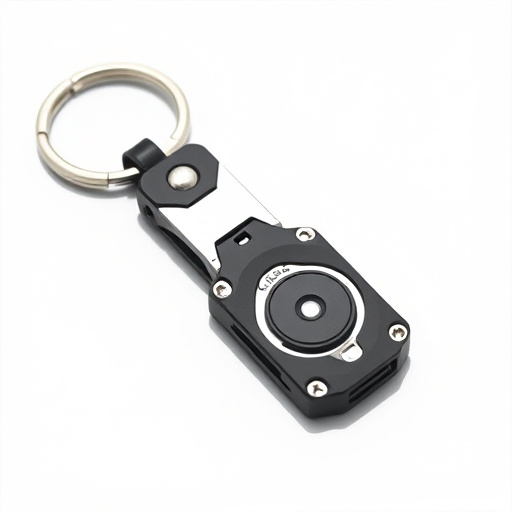University Approved Safety Keychains with quick release mechanisms offer enhanced security and peace of mind on campuses. Rigorously tested to meet safety standards, these keychains prioritize durable materials, robust construction, reliable locking, and RFID blocking for protection. Their compact design, smooth operation, and customizable attachment options make them ideal for students needing swift access without bulk.
“Unleash security with the innovative world of University-approved quick release keychain mechanisms. This comprehensive guide explores the intricate details behind these compact safety devices, demystifying their operation and benefits. From understanding the basic mechanisms to navigating university approval processes, we delve into what makes these keychains a game-changer for personal security. Discover crucial safety features, real-world applications, and expert tips on selecting the ideal University-approved quick release keychain.”
- Understanding Quick Release Mechanisms
- University Approval Process for Keychains
- Safety Features: What to Look For
- Real-World Applications and Benefits
- Choosing the Right Quick Release Keychain
Understanding Quick Release Mechanisms
Quick release mechanisms are a key feature in modern keychain safety devices, offering a simple yet effective solution for users’ peace of mind. These innovative designs allow for swift and effortless access to your keys, especially in emergency situations. By employing a specialized lever or button, users can instantly unlock their keychain, providing quick deployment and enhanced security.
University-approved safety keychains often incorporate these mechanisms to ensure students and faculty have rapid access to their belongings while maintaining a high level of protection. The reliability and ease of use associated with quick release systems make them a preferred choice for individuals seeking convenient and secure key management solutions.
University Approval Process for Keychains
Many universities and educational institutions have strict safety protocols, especially when it comes to personal belongings like keychains. The approval process for any accessory or device intended for student use is thorough, ensuring that only safe and reliable products enter campus grounds. For keychain safety devices featuring quick release mechanisms, this involves rigorous testing and certification to meet specific safety standards. These standards are designed to safeguard students from potential hazards, such as sudden disconnection of the keychain from their keys or bags, which could lead to loss or even more severe consequences in crowded environments.
University-approved safety keychains must adhere to stringent criteria related to material composition, construction quality, and the mechanism’s reliability under various conditions. Manufacturers often collaborate closely with campus security teams and student unions to understand their specific requirements. This collaborative approach ensures that the final product not only meets but exceeds the expected safety levels, providing students with peace of mind while also promoting a culture of responsibility and awareness on college campuses.
Safety Features: What to Look For
When choosing a keychain with a quick release mechanism, safety should be your top priority. Look for features that ensure secure attachment and swift deployment, such as durable materials, robust construction, and reliable locking mechanisms. These keychains should pass university-level safety standards to guarantee their effectiveness in preventing accidental drops or losses.
In addition to the physical aspects, consider models with built-in RFID blocking technology to safeguard your personal information. University-approved keychain safety devices often incorporate these advanced features, providing peace of mind and protection against theft or unauthorized access.
Real-World Applications and Benefits
University-approved safety keychains equipped with quick release mechanisms offer a multitude of real-world applications, enhancing security and peace of mind for students, faculty, and staff alike. These innovative devices are especially beneficial in high-traffic environments like campuses, where they can swiftly facilitate emergency evacuations or access to critical facilities during crises.
The benefits extend beyond emergency preparedness. Quick release mechanisms streamline everyday tasks such as unlocking doors, accessing classrooms, or retrieving essential items from locked storage areas, eliminating the frustration and time wasted with traditional keychains. Their compact design and reliable functionality make them ideal for students carrying heavy backpacks, ensuring accessibility without bulk or hindrance.
Choosing the Right Quick Release Keychain
When selecting a keychain with a quick release mechanism, it’s essential to consider your specific needs and preferences. One key factor is ensuring the device is university-approved for safety, which guarantees its reliability and compliance with security standards. Look for features like durable construction, a smooth release action, and a secure lock mechanism to protect your keys from accidental drops or theft.
The best quick release keychain should also offer customization options, allowing you to attach it conveniently to your bag, belt loop, or lanyard. Additionally, consider the size and weight, especially if you tend to carry a lot of keys; a lighter option can reduce overall baggage burden without compromising safety.
The integration of quick release mechanisms in keychains has revolutionized personal security, particularly in university settings. By understanding these mechanisms, navigating the approval processes, and recognizing safety features, individuals can benefit from enhanced keychain security without compromising everyday convenience. University-approved safety keychains, with their robust designs and multiple release options, offer peace of mind for students, faculty, and staff alike. When selecting a keychain, consider real-world applications that suit your needs, ensuring you prioritize both functionality and safety.
